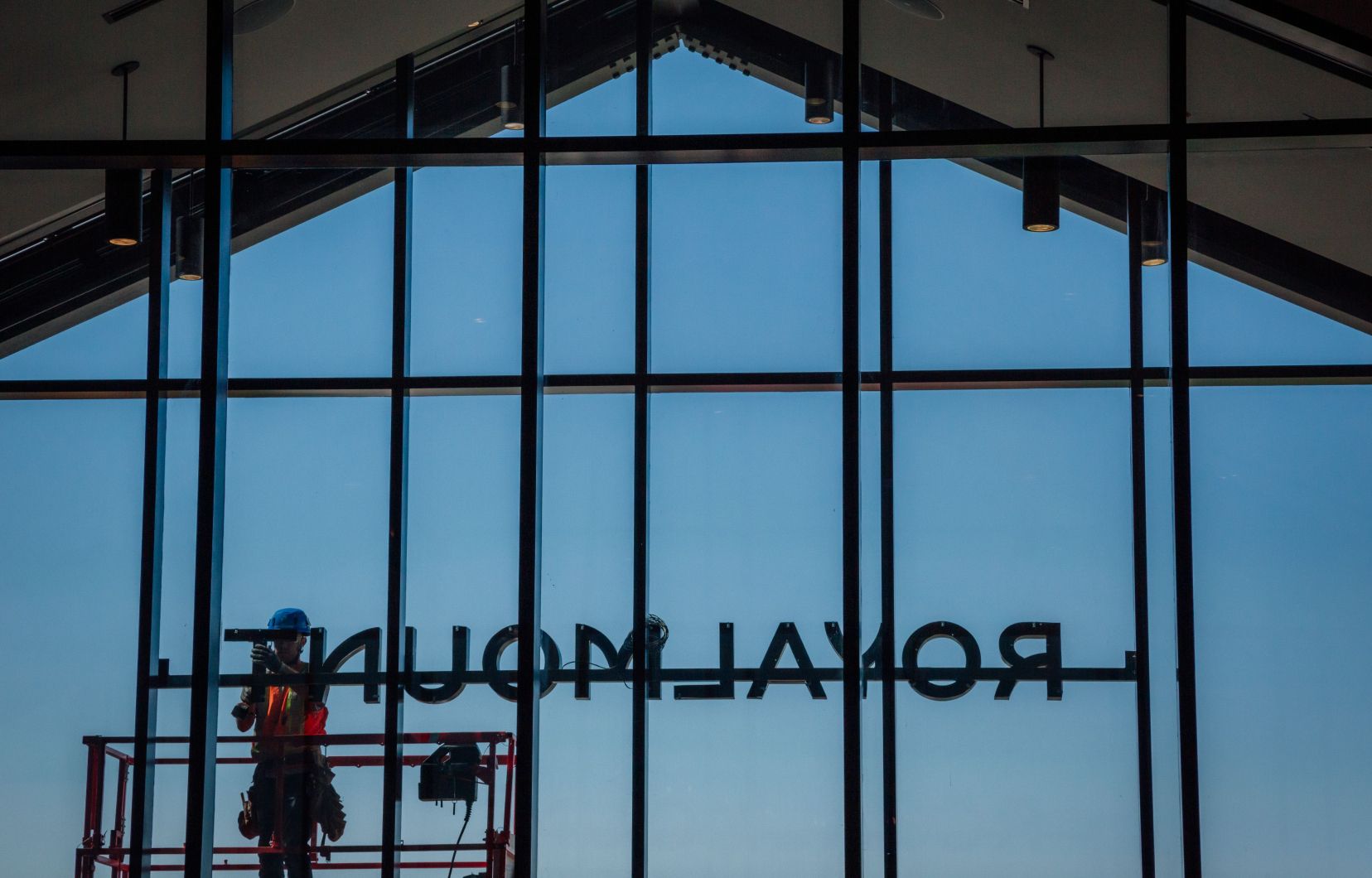The brand new Royalmount shopping centre was inaugurated on September 5, 2024. The company behind this project, Carbonleo, had already given us the “luxurious” DIX30 district. The developer is doing it again with the ambition of creating a “new midtown Montréalais”, or “a bold and avant-garde multifunctional living environment”. In addition to an aquarium, a cinema, a hotel and housing that are still awaited, it is above all a commercial destination focused on luxury. The three pillars of this 10 billion megaproject are “connectivity”, “sustainability” and “inclusive luxury”.
Many people raised their eyebrows when they heard this expression, which immediately sounds like an oxymoron. How can Rolexes, $20,000 designer coats or other luxury goods intended for the conspicuous consumption of an elite be “inclusive”? Is it about bringing together “prestige boutiques” like Louis Vuitton or Gucci with other, more “popular” stores like Aldo, La Vie en rose, David’s Tea or Garage? Is this an example of “social diversity,” where the ultra-rich will be able to cross paths with the middle classes in the corridors of a sumptuous shopping center?
Isn’t inclusive luxury a contradiction in itself? Luxury generally refers to a refined, expensive and rare product, reserved for a privileged minority with high purchasing power and/or a good level of cultural capital. Luxury allows elites to distinguish themselves from the more “vulgar” or “ordinary” tastes of the majority. Of course, disadvantaged or indebted people can aspire to these prestige goods, synonymous with success or social status, but they remain essentially unequal cultural markers. By its very nature, luxury would be reserved for the dominant class, whether it is composed of aristocrats, bourgeois or parvenus.
However, this elitist vision of luxury stems above all from a private and capitalist conception of luxury, that is, a commodity reserved for the wealthiest. The journalist and columnist George Monbiot already mentioned in 2017, in an article in Guardian, the fact that there is a big difference between “public luxury for all” and “private luxury for a few.” “Public luxury” is made up of many well-known things: public parks, playgrounds for children, public swimming pools, municipal libraries, public art galleries, public transportation, bike paths, etc. It is defined as a set of shared goods that meet the needs of the community, are accessible free of charge or at low cost, and are collectively financed by our taxes and duties.
Not the same aura
Unfortunately, public luxury does not enjoy the same prestige as private luxury, especially since decades of neoliberalism, underfunding of public services and the slow demolition of the Quebec model. Our schools and CEGEPs are falling apart, our hospitals are overcrowded, our daycares are understaffed, bike paths are riddled with potholes, social housing is being built in dribs and drabs in the midst of a housing crisis. Public luxury does not have the same aura of “wealth” or “abundance,” especially because it lacks love and collective investment.
It must be said that it is difficult for the State to finance public luxury, especially when it invests $7.3 billion for a battery factory intended for export, or when Hydro-Québec plans to spend $155 to $185 billion by 2035 to essentially electrify a gigantic fleet of electric individual cars (the very example of private luxury). Taxes are then reduced or $500 checks are given so that the masses can absorb the increase in the cost of living through individual consumption choices, and therefore a little private luxury.
As for the wealthier people who still have money after their overpriced grocery shopping, they will be able to shop in a new so-called “carbon neutral” shopping centre selling “sustainable” Nike products made from recycled materials, or dream of buying a luxury condo synonymous with “density”, all at the intersection of Montreal’s two busiest arteries. Of course, we will say that the Royalmount is not financed by the state, but by a private developer, and that all exchanges in this space will take place between consenting adults. But that is to forget that this land could have been used for a project of public interest, and that the costs of traffic congestion and other negative externalities will have to be assumed collectively. Privatization of luxury, socialization of nuisances and underfunding of public luxury often go hand in hand.
Equality in abundance
In addition to the many infrastructures of public luxury that deserve to be better financed, there is also its little brother, “communal luxury”. As Kristin Ross recalls in a book on The Imagination of the Commune de Paris (2016), “communal luxury is neither the bourgeois luxury that surrounds it nor the utilitarian experiments of state collectivism.” It is essentially “equality in abundance,” aiming to overcome the division between the beautiful and the useful, art and everyday life, culture and the common people.
Communal luxury was championed by a variety of thinkers, including Élisée Reclus, William Morris, Eugène Pottier, and Louise Michel. A declaration by the Fédération des artistes de Paris in 1871 advocated “the free expression of art free from all government control and privilege,” and focused on “the conservation of the treasures of the past, the implementation and illumination of all elements of the present, and the regeneration of the future through education.” This could take the form of public art at the municipal level, the beautification of public spaces and buildings, the development of culture and know-how, or the protection of the “commons.”
The commons are models of collective management of shared resources that allow us to take care of different things (food, healthcare, housing, mobility) beyond the traditional market-State binomial. Self-managed companies, housing cooperatives, agricultural land protected by social utility trusts, green alleys, free digital platforms and encyclopedias like Wikipedia are some examples of the “wealth of the commons”.
What if we collectively tried to take care of “public luxury” and cultivate “communal luxury” in our lives, through participation in collective initiatives and shared spaces? Would we ultimately be richer than consumers in a shopping mall focused on private luxury?
